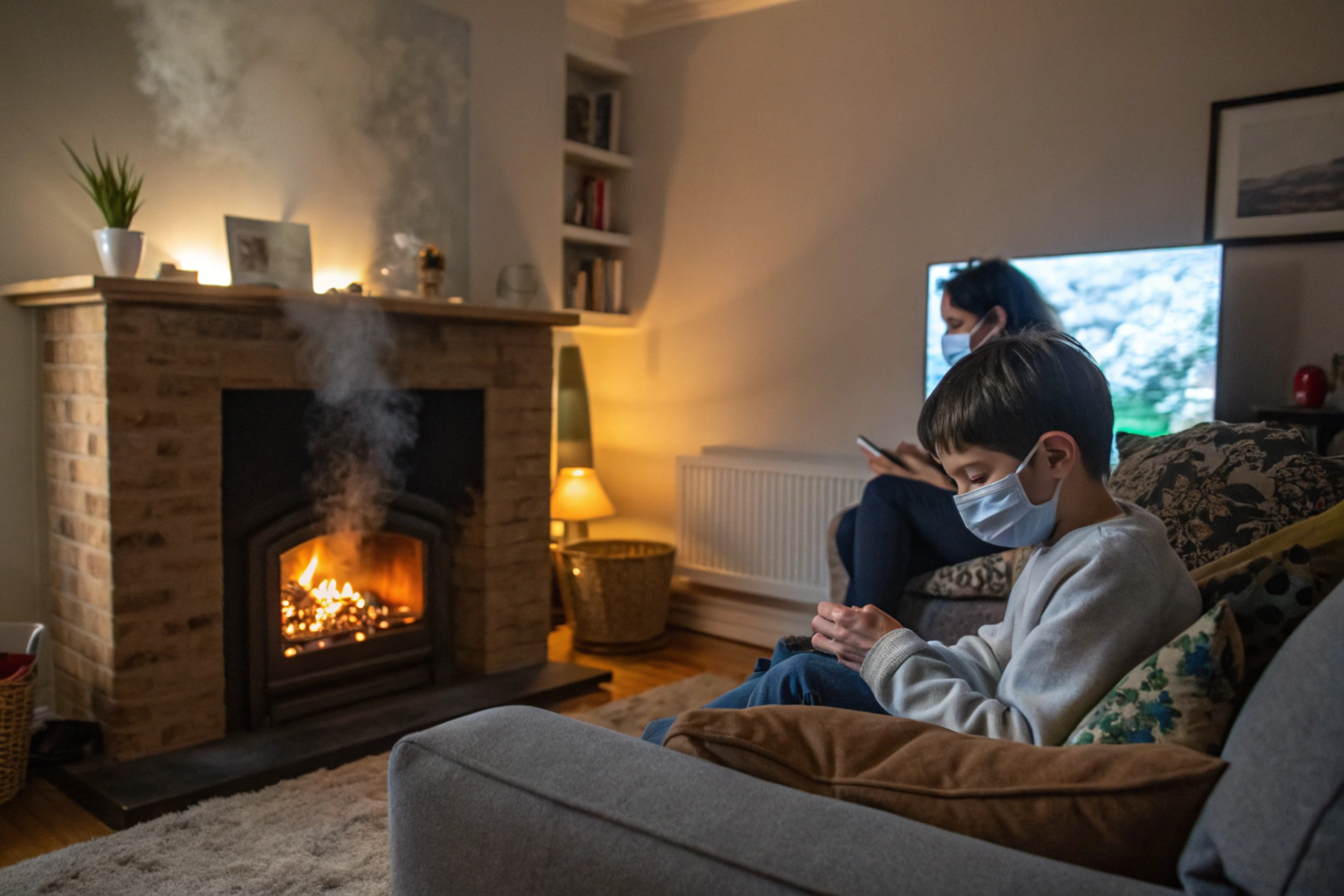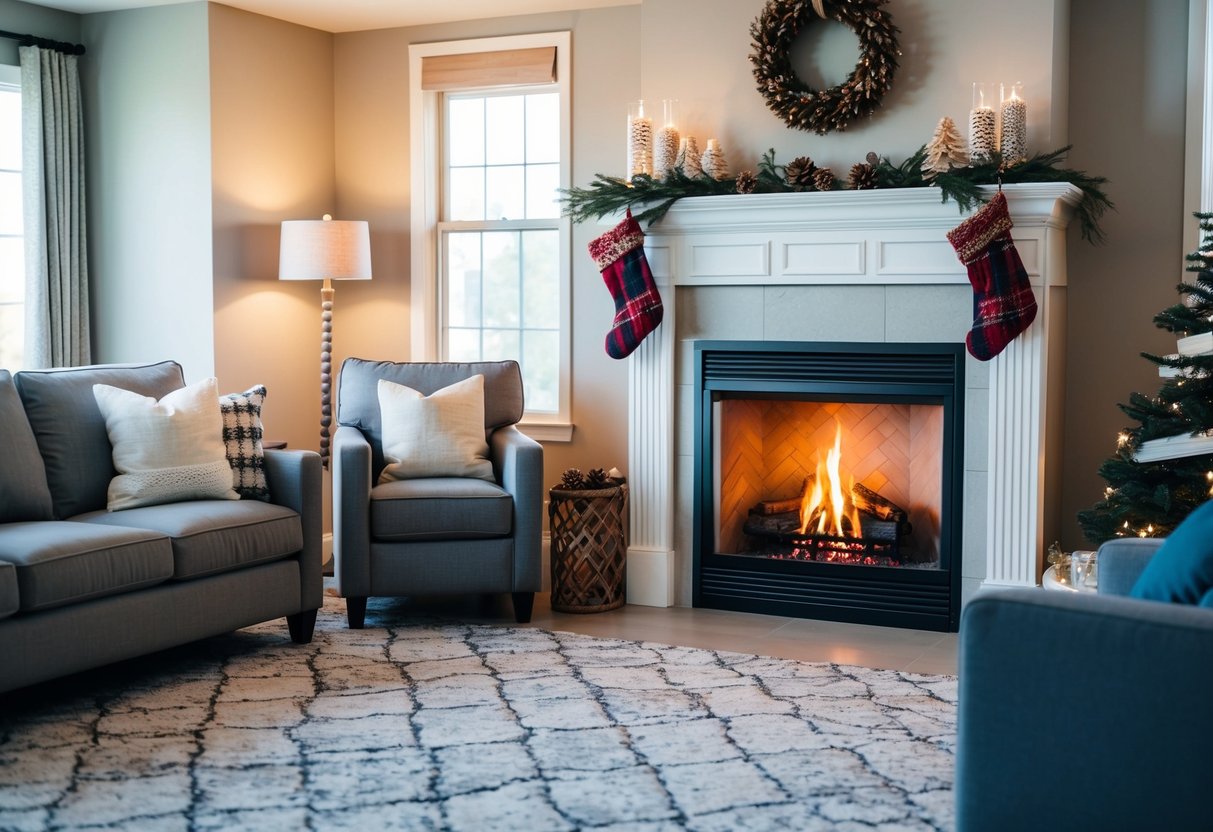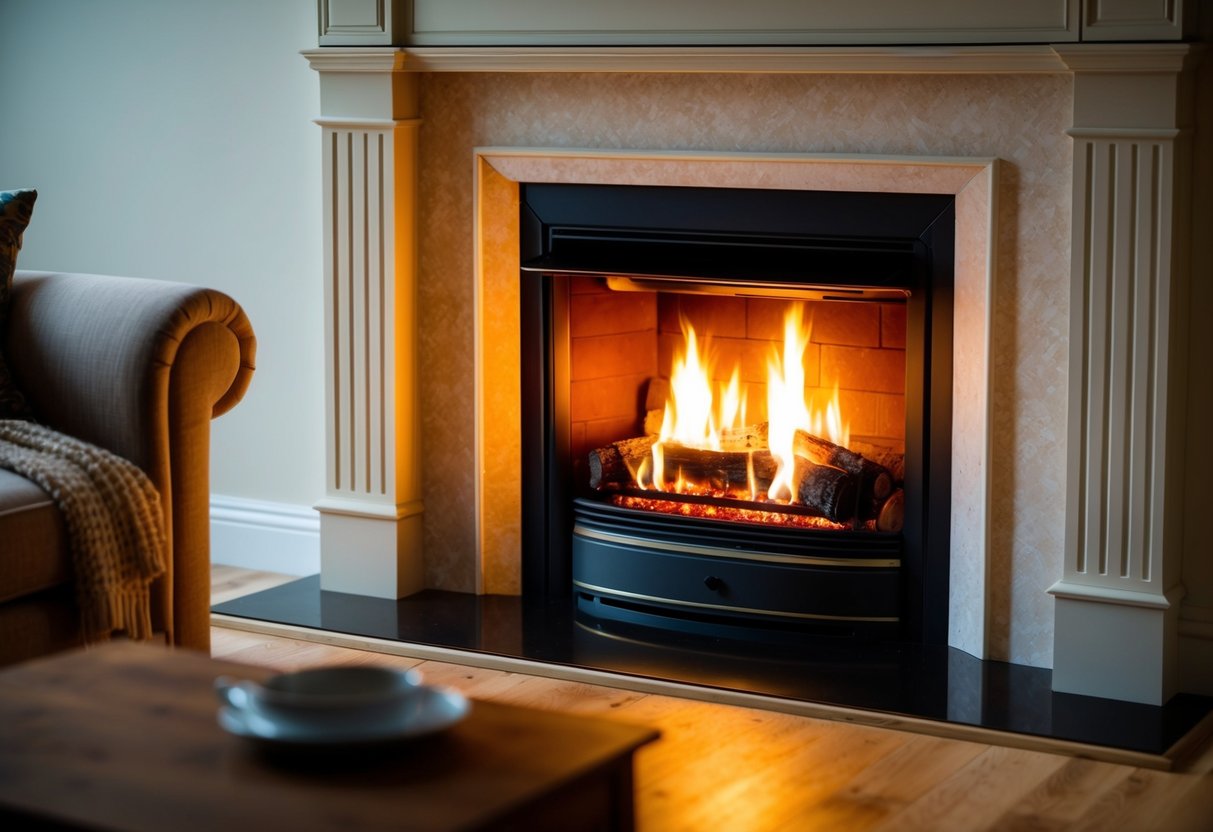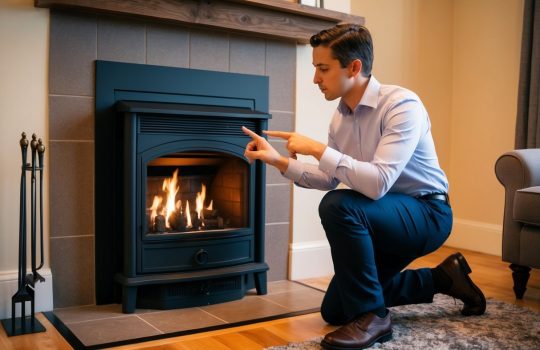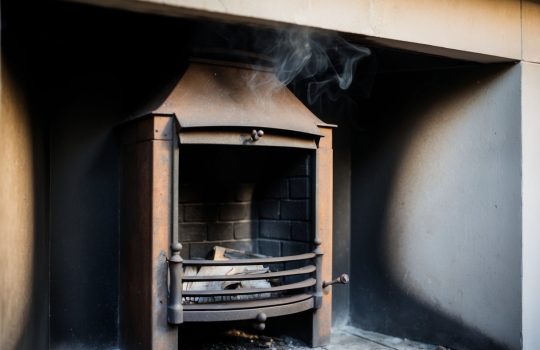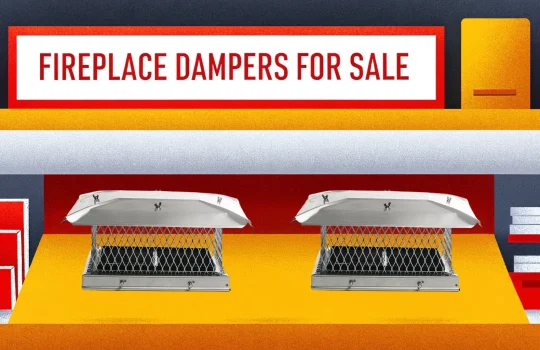How Fireplace Dampers Impact Indoor Air Quality: Understanding the Connection to Home Health
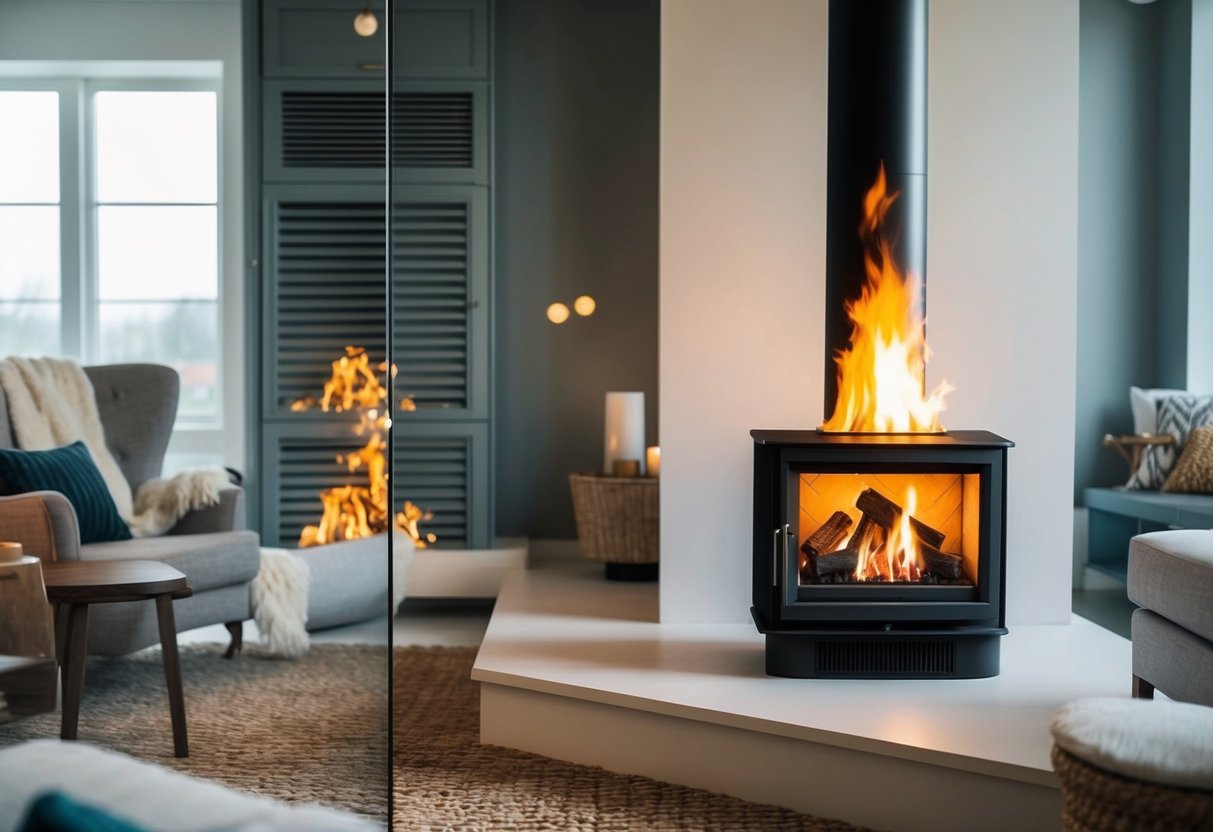
Fireplace dampers play a crucial role in maintaining indoor air quality. These mechanical devices control the airflow between your home and the chimney, impacting both heating efficiency and the air you breathe. A properly functioning damper helps prevent outdoor pollutants from entering your living space while also regulating the release of combustion byproducts when the fireplace is in use.
We often overlook the importance of dampers in our fireplaces. When closed, they act as a barrier against cold drafts and outdoor contaminants. When open, they allow smoke and harmful gases to escape. This delicate balance is essential for creating a cozy atmosphere without compromising the air we breathe.
Regular maintenance of fireplace dampers is key to ensuring optimal indoor air quality. A damaged or poorly sealed damper can lead to increased particulate matter and pollutants in your home. By understanding and properly managing your fireplace damper, you can enjoy the warmth and ambiance of a fire while safeguarding your indoor environment.
Key Takeaways
- Fireplace dampers regulate airflow and impact indoor air quality
- Proper damper function prevents pollutants from entering living spaces
- Regular maintenance of dampers is essential for optimal air quality and fireplace performance
Understanding Fireplace Dampers and Indoor Air Quality
Fireplace dampers play a crucial role in managing indoor air quality. They control airflow and smoke in both wood-burning and gas fireplaces, impacting the levels of pollutants inside homes.
Role of Fireplace Dampers
Fireplace dampers act as a barrier between the chimney and living space. When open, they allow smoke and combustion gases to escape. When closed, they prevent heat loss and outdoor air intrusion.
Properly functioning dampers are essential for maintaining good indoor air quality. They help control the release of air pollutants like fine particles and carbon monoxide from wood-burning fireplaces.
For gas fireplaces, dampers regulate ventilation to ensure complete combustion and minimize harmful emissions. A well-sealed damper also prevents backdrafts that can introduce outdoor pollutants.
Types of Fireplaces and Their Impact
Wood-burning fireplaces generally have a larger impact on indoor air quality than gas fireplaces. They produce more smoke and particulate matter, which can accumulate indoors if not properly vented.
Gas fireplaces burn cleaner, releasing fewer pollutants. However, they still require proper damper operation to ensure safe combustion and prevent gas buildup.
Both types benefit from regular damper maintenance. A stuck or damaged damper can lead to poor ventilation and increased indoor air pollution.
We recommend annual inspections of fireplace dampers to ensure they open and close fully. This helps maintain optimal indoor air quality and fireplace efficiency.
Health Effects of Indoor Pollutants from Fireplaces
Fireplace emissions can introduce harmful pollutants into our homes, posing significant health risks. These pollutants can cause both immediate respiratory issues and long-term health concerns.
Common Pollutants and Respiratory Issues
Particulate matter is a primary concern with fireplace smoke. These tiny particles can penetrate deep into our lungs, causing irritation and inflammation. We often see increased cases of asthma attacks and bronchitis in homes with active fireplaces.
Carbon monoxide, an odorless gas, is another dangerous byproduct. It can cause headaches, dizziness, and nausea in low concentrations. At higher levels, it can be fatal.
Nitrogen dioxide from fireplaces can irritate our airways, leading to coughing and wheezing. This pollutant is particularly problematic for people with pre-existing respiratory conditions.
Long-Term Health Concerns
Chronic exposure to fireplace pollutants may have serious long-term effects on our health. Studies suggest a link between prolonged exposure to wood smoke and an increased risk of lung cancer.
Cardiovascular problems can also arise from long-term inhalation of fine particulate matter. We’ve seen evidence of increased rates of heart attacks and strokes in areas with high levels of wood smoke pollution.
Children and the elderly are particularly vulnerable to these long-term effects. Their developing or weakened immune systems make them more susceptible to the harmful impacts of indoor air pollutants from fireplaces.
Enhancing Ventilation and Air Filtration
Proper ventilation and air filtration are crucial for maintaining healthy indoor air quality when using fireplaces. These strategies help remove pollutants and improve overall air circulation in homes with fireplaces.
Improving Airflow in Homes with Fireplaces
Opening windows periodically can help refresh indoor air and remove accumulated pollutants. We recommend cracking a window for 15-20 minutes daily, especially after using the fireplace. Installing exhaust fans in rooms with fireplaces can also help expel contaminated air.
Regular cleaning of fireplace components, including the chimney and flue, prevents buildup of soot and creosote that can impair airflow. We suggest scheduling annual professional chimney inspections and cleanings.
Upgrading to a more efficient fireplace insert or sealed gas fireplace can significantly reduce indoor air pollutants. These modern options provide better combustion and venting of exhaust gases.
Air Purifiers and Filters for Healthy Indoor Air
High-efficiency particulate air (HEPA) purifiers are effective at capturing fine particles from fireplace smoke. We recommend placing a HEPA purifier in rooms where the fireplace is used to remove up to 99.97% of airborne particles.
Upgrading your home’s HVAC air filter can also help. Using filters with a MERV rating of 11 or higher will trap more smoke particles and other pollutants circulating through your ductwork.
Activated carbon filters are particularly good at absorbing odors and gases from fireplace smoke. Consider using air purifiers that combine HEPA and activated carbon filtration for comprehensive air cleaning.
Regular replacement of air filters is essential. We suggest checking and replacing filters monthly during heavy fireplace use to maintain optimal air quality and reduce allergies.
Best Practices for Fireplace Maintenance and Operation
Proper maintenance and operation of fireplaces are essential for ensuring safety, efficiency, and good indoor air quality. Regular upkeep and smart fuel choices can significantly impact the performance of your fireplace.
Routine Maintenance and Inspection
We recommend scheduling annual professional chimney inspections and cleanings. This helps prevent creosote buildup and identifies potential issues early. Between professional visits, we suggest regular self-checks of the fireplace and chimney.
Look for cracks, loose bricks, or damaged mortar in the firebox. Clean out ash regularly, leaving about an inch for insulation. Check the damper operation to ensure it opens and closes smoothly.
Inspect the chimney cap for damage or blockages. Clear debris from the chimney’s exterior. Test smoke and carbon monoxide detectors monthly, replacing batteries as needed.
For gas fireplaces, have a professional check gas lines and connections annually. Clean the glass and check seals to maintain efficiency.
Choosing the Right Fuel
Selecting appropriate fuel is crucial for fireplace performance and air quality. We strongly recommend using only seasoned hardwoods for wood-burning fireplaces. These should be dried for at least six months to a year.
Seasoned wood burns hotter and cleaner, producing less smoke and creosote. Avoid burning treated wood, painted materials, or household trash, as these release harmful chemicals.
For gas fireplaces, use the fuel type specified by the manufacturer. Ensure proper gas pressure for efficient burning.
Consider using EPA-certified wood stoves or fireplace inserts for improved energy efficiency and reduced emissions. These modern appliances burn wood more completely, reducing air pollution.
Always follow local regulations regarding wood burning, especially during air quality alerts.
Regulatory Standards and Environmental Considerations
Fireplace dampers play a crucial role in meeting regulatory standards and addressing environmental concerns. Proper damper operation helps control emissions and improve energy efficiency in homes with fireplaces.
EPA Regulations on Fireplaces
The Environmental Protection Agency (EPA) has established strict regulations for fireplace emissions to protect indoor air quality and public health. These standards limit the amount of particulate matter and other pollutants that fireplaces can release.
Wood-burning fireplaces must meet specific emission rates, typically measured in grams per hour. Gas fireplaces have different requirements, focusing on carbon monoxide and nitrogen oxide emissions.
Proper damper use is essential for compliance with EPA regulations. When closed, dampers prevent heated air from escaping and reduce the influx of outdoor pollutants. This helps maintain indoor air quality and energy efficiency.
Sustainability and Efficient Heating
We recognize the importance of sustainable heating practices in modern homes. Fireplace dampers contribute significantly to energy conservation and heating efficiency.
When not in use, a closed damper prevents up to 8% of a home’s heated air from escaping through the chimney. This reduction in heat loss translates to lower energy consumption and decreased utility costs.
Dampers also play a role in controlling the burn rate of wood fires. By adjusting the damper, we can regulate airflow and optimize fuel consumption, leading to more efficient and cleaner burning.
Energy-efficient fireplaces with well-maintained dampers can serve as effective supplemental heat sources, reducing reliance on central heating systems and lowering overall energy usage.
Frequently Asked Questions
Fireplace dampers play a crucial role in managing indoor air quality when using fireplaces. We’ve compiled answers to common questions about fireplace smoke, air pollution prevention, and best practices for damper operation.
What are the risks of fireplace smoke in residential settings?
Fireplace smoke contains harmful particulates and gases that can irritate the respiratory system. It may worsen asthma and allergies, and prolonged exposure can lead to more serious health issues. Proper ventilation is essential to minimize these risks.
What steps can be taken to minimize indoor air pollution from fireplaces?
Using dry, seasoned wood and maintaining a hot fire can reduce smoke production. Installing a whole-house HEPA air filtration system can remove up to 99.97% of particles 0.3 microns and larger. Regular chimney cleaning and fireplace maintenance also help minimize pollution.
How can one ensure the air remains clean when using a fireplace indoors?
Open the damper fully before lighting the fire and keep it open until the fire is completely out. Use an air purifier in the room with the fireplace. Crack a window slightly to improve air circulation and prevent smoke buildup.
What are the best practices for operating fireplace dampers to maintain indoor air quality?
Open the damper completely before starting a fire. Keep it open while the fire is burning and for several hours after it’s extinguished. Close the damper only when the ashes are cool to prevent backdrafts of smoke and carbon monoxide.
Are there specific health concerns associated with toxic air from home fireplaces?
Yes, fireplace smoke can contain carbon monoxide, nitrogen dioxide, and volatile organic compounds (VOCs). These pollutants can cause headaches, dizziness, and respiratory issues. Long-term exposure may increase the risk of cardiovascular problems and lung diseases.
How do the American Lung Association’s recommendations relate to fireplace use and indoor air quality?
The American Lung Association advises limiting fireplace use to protect indoor air quality. They recommend using cleaner-burning gas fireplaces over wood-burning ones. For wood fireplaces, they suggest burning only dry, seasoned hardwood and ensuring proper ventilation.


